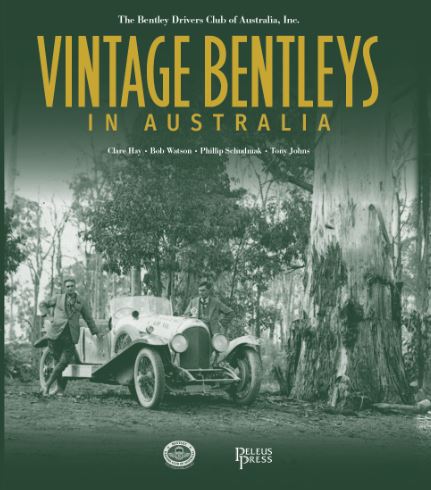
When Valerie Pirie interviewed for her first real secretarial job after college, she did not expect to end up working for Stirling Moss. Regarded as the greatest driver who was never crowned world champion, he would become not only her new boss, but a lifelong friend. Here, in this playful and moving memoir, she opens up about the man behind the steering wheel.
With a joie de vivre and unparalleled pluck, Pirie details the highs and lows of her many years working and occasionally living at very close quarters with a true pioneer of Formula One, recounting anecdotes from the track, the office and nights out in the West End of London with one of the best-known names in motor racing. Whether at Goodwood, Le Mans or the Nürburgring, Pirie was often there beside Moss to witness the wins, losses and technical malfunctions and, of course, his career-ending crash in 1962.
If she wasn’t at his bedside in the hospital, managing his never-ending building works or on one occasion transporting his spare pair of dentures to France, Pirie was accompanying Moss wherever he needed her most. Never just colleagues, the pair were true companions, and this book brings to light the story of their enduring friendship from the classic post-war era of motor racing through to today.

Along with three fellow motor racing enthusiasts, Steve Matchett – Formula 1 world champion mechanic; accomplished television broadcaster; and best-selling author – is trapped overnight in New York: a fogbound JFK airport. With no sign of the weather improving, talk between the stranded passengers inevitably turns to Formula 1. During the course of their cloistered night, with conversation fueled by regular trips to the departure lounge bar, our protagonists draw on Matchett’s encyclopedic knowledge of grand prix engineering, his easy familiarity with F1 paddock life, to piece together the perfect dream-team Formula 1 race car.By use of his enviable signature talent, his ability to explain complex issues using straightforward, uncomplicated language, Steve Matchett shows us how the various F1 teams have arrived at their current state-of-the-art designs – lays out exactly how a championship winning grand prix car is assembled.Originally published by Orion (of London) in 2004, The Chariot Makers is Steve Matchett’s third book. Along with Life in the Fast Lane, and The Mechanic’s Tale, this compelling, insightful story – its warm text reading as a novel – forms the final installment of the author’s entertaining, timeless, and highly acclaimed Formula 1 trilogy.
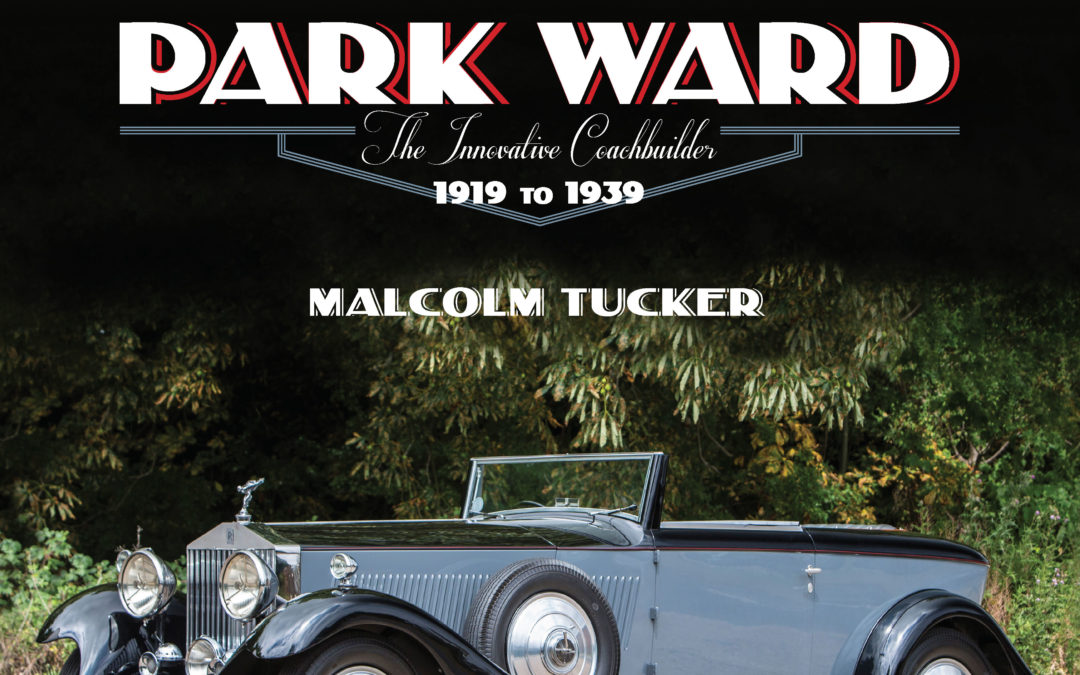
A major three-volume work on the pre-war history and cars of the great British coachbuilder, Park Ward. The company was the most prolific coachbuilder on Rolls-Royce and Bentley chassis, ultimately completing over 4,300 cars. Volume I and II is the story of Park Ward & Co Ltd. – the men who worked there and the company’s growing relationship with Rolls-Royce Ltd. A photographic record of all the Rolls-Royce models from Silver Ghost to the Wraith that carried Park Ward coachwork is included, along with chapters on the W. O. Bentley cars, and the Rolls-Royce and Bentley experimental cars with Park Ward coachwork. The Derby-built Bentleys follow, supported by chapters on the London Motor Show cars, coachwork on marques other than Rolls-Royce and Bentley, and examples of Park Ward advertising literature and catalogues. An appendix contains a series of articles written by ‘Bill’ Ward, the company founder’s son, entitled ‘The Art and Evolution of Coachbuilding’. Volume III contains extensive tables detailing each of over 3,000 pre-war Park Ward-bodied Rolls-Royce and Bentley, as well as a listing of over 1,000 Park Ward bodies on other marques. In addition, and rarely seen before, there are over 700 sales order pages extracted from Park Ward’s Finishing books.
Author Malcolm Tucker is a past-Chairman of the Rolls-Royce Enthusiasts’ Club, and is an established Rolls-Royce and Bentley historian, writer and ‘after dinner’ speaker. This will be his fourth book for Dalton Watson Fine Books. Malcolm has owned thirty-five Rolls-Royce or Bentley cars, including, for forty-six years, a 1928 20hp faux cabriolet by Park Ward.
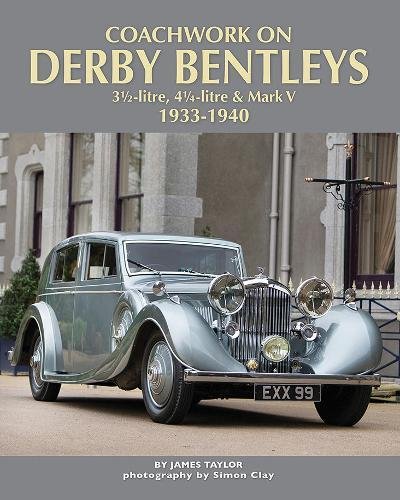
In the 1930s, Rolls-Royce’s Derby factory supplied Bentleys only as chassis, without bodies, and many customers for these refined, fast and enormously desirable cars would then turn to a particular coachbuilder to design and construct a body for them to meet their tastes and requirements. From Abbey of Acton, West London, to Worblaufen of Switzerland, by way of great names like Barker, Gurney Nutting, HJ Mulliner and Saoutchik, Coachwork on Derby Bentleys covers all the British and overseas coachbuilders on the Bentley chassis, and reviews the bodies they built on the 3.5-litre, 4.25-litre and the short-lived Mark V. The British coachbuilders are dealt with in alphabetical order, as are the overseas companies in a separate section, with details of the different types of bodies they supplied. Bentley aficionados will particularly appreciate the inclusion of chassis numbers for all the cars bodied by all the coachbuilders, which makes this a truly inclusive work. There are some 280 colour photographs, including in-detail shoots of 40 outstanding cars by the distinguished automotive photographer Simon Clay, and 80 black-and-white illustrations from the archives. Celebrating as it does the work of the leading coachbuilders of the era, as well as Bentley’s quite exceptional productions of the 1930s, this book offers an unrivaled store of knowledge for the many enthusiasts and owners who care passionately about the cars, and serves as a tribute to the people who made them.
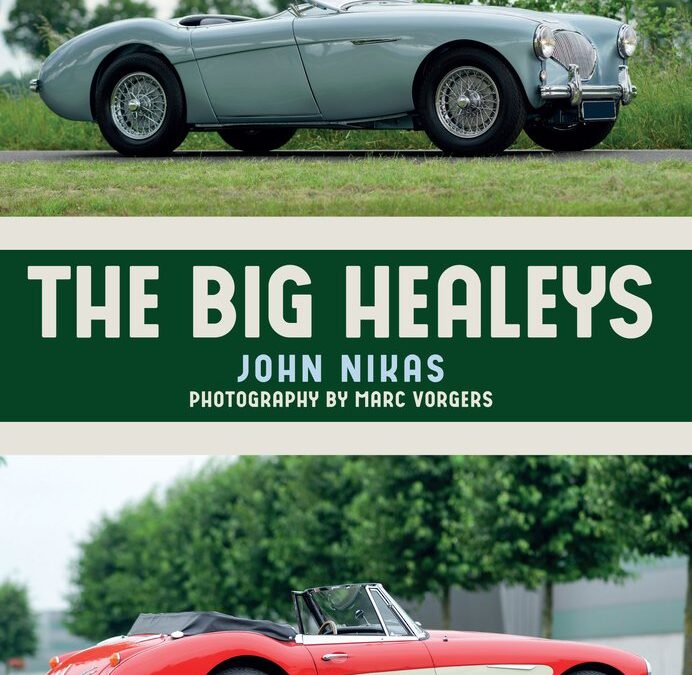
With their sleek and powerful looks, the big Austin-Healeys have always made an impression. In this revealing book, the author explores the development of the ‘Big’ Healeys, as distinct from the smaller Austin-Healey Sprite, to produce a comprehensive and compelling account of one of the iconic British sports cars.After Donald Healey’s sports car design impressed the managing director of Austin, Leonard Lord, at the 1952 London Motor Show, Healey was given the engineering back-up that he needed to produce the car in quantity. Teaming up with Jensen Motors to produce the bodywork, Austin provided the mechanical components at their Longbridge factory. The new car was known as the Austin-Healey 100, because it could achieve 100 mph.This book also follows the development of the Austin-Healey 100-Six and the Austin-Healey 3000, describing both the technical developments and the achievements of the cars in competitions and as record-breakers.
Every enthusiast of the marque should have this comprehensive review of the design and manufacture of the Big Healeys on their bookshelf, which reveals previously untold stories to tell you the real story of these magnificent vehicles and the men that made them possible .Gerry Coker, Austin-Healey Designer

Three quarters of a million people are in a plane somewhere right now. Many millions travel by air each day. For most of us, the experience of being in an airport is to be endured rather than appreciated, with little thought for the quality of the architecture. No matter how hard even the world’s best architects have tried, it is difficult to make a beautiful airport.
And yet such places do exist. Cathedrals of the jet age that offer something of the transcendence of flight even in an era of mass travel and budget fares. Here are twenty-one of the most beautiful airports in the world.
The book features:
Wellington International Airport, ‘The Rock’ shaped like the dangerous cliffs of a local legend
Kansai International Airport, Renzo Piano’s gigantic project built on three mountains of landfill
Shenzhen International Airport, a manta ray shaped terminal putting this booming region on the map
Daocheng Yading Airport, the world’s highest civilian airport in the middle of the Tibetan mountains
Chhatrapati Shijavi International Airport, rising from the slums of Mumbai like a Mogul palace
Queen Tamar Airport, a playfully iconic modern airport nestled in the mountains of Georgia
King Abdulaziz International Airport, the gateway to Mecca resembling a Bedouin city of tents
Pulkovo Airport, mirroring the city of St Petersburg with bridges, squares and art
Berlin-Tegel Airport, ultramodernity, 1970s style
Copenhagen Airport, an icon from the golden age of air travel
Franz Josef Strauß Airport, sober and easy to negotiate, Munich’s model airport
Paris Charles du Gaulle Airport, the brutalist icon that launched the career of airport architect Paul Andreu
London Stansted Airport, Norman Foster’s return to the golden age of air travel
Lleida-Alguaire Airport, a relic of Catalonia’s early 21st century building boom
Madrid-Barajas Airport, Richard Rogers and Antonio Lamela’s calm, bamboo-panelled Terminal 4
Marrakesh Ménara Airport, a blend of 21st century construction and traditional Morrocan design
Santos Dumont Airport, Rio de Janeiro’s modernist masterpiece
Carrasco International Airport, Rafael Viñoly’s design inspired by the sand dunes of his native Uruguay
Malvinas Argentinas International Airport, echoing the mountains and glaciers of Tierra del Fuego
John F Kennedy International Airport, Eero Saarinen’s glamorous jet-age TWA terminal
Spaceport America, a vision of the future in the New Mexico desert
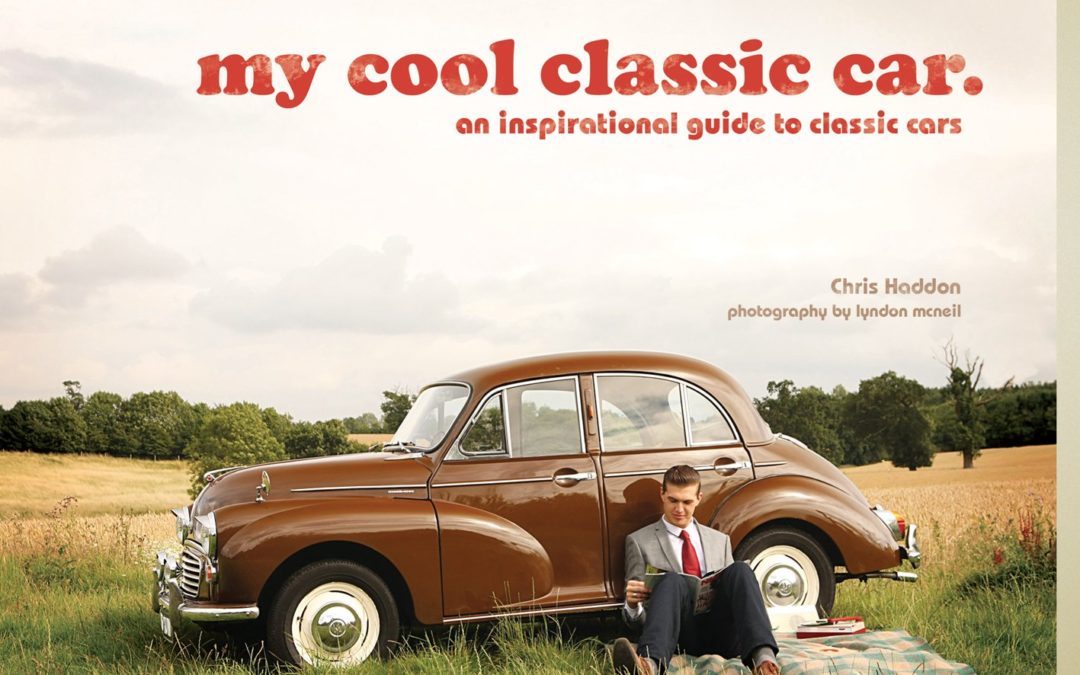
A celebration of our love affair with the car, from the humble Citroen 2CV to the sleek Mercedes 300 SL Roadster, with owners’ stories and vehicle notes
Forty two vehicles from around the world are featured in this gem for vintage car and retro design enthusiasts, including the small but perfectly formed Fiat 500, the Bavarian Goggomobil, Willys WW2 Jeep, the Plymouth Belvedere with its extraordinary trademark wings, the popular and trustworthy Morris Minor, and the Mini, the design success of the 1960s. Cars are frequently an expression of their owners’ personalities, and the wealth of examples and owners’ stories included here are testament to this. The book also includes details of extraordinary journeys, some short and some long, that some of these cars have made—London to Mexico and 2,000-mile round trips to Italy, along with heartwarming stories of how a car has become a priceless part of the family. The photography focuses on the design specifics which have earned these cars the label “classic,” while the owners’ stories and accompanying vehicle notes, which explain the influence of car design on the wider design community, offer interesting insights as well as inspiration to the design conscious. It is guaranteed to leave the reader contemplating the joys of embarking on a road trip in any one of the iconic cars featured.

This richly illustrated book chronicles lighter-than-air flight from Archimedes’ discovery of the principle of buoyancy to the latest in sport balloons and plans for future airships. Far more than a timeline of events, Lighter Than Air focuses on the people―flamboyant and daring, heroes and scoundrels―who made history in the sky. Here are the eighteenth-century pioneers who first took to the skies, the peripatetic aeronauts who criss-crossed two continents a century later, the airmen who manned the great rigid airships, and the intrepid balloonists who flew their craft across oceans and continents in the years following World War II.
The first half of the volume recounts the invention of the balloon, the golden age of the professional aerial showmen in Europe and America, the use of balloons for aerial reconnaissance, and the key role of balloons in scientific research. The second half presents the rich tale of the airship from eighteenth-century dreams to twentieth-century reality. These chapters describe the early development of the pressure airship, the emergence of the rigid airship and its golden age in the first half of the twentieth century, and the military and civil applications of these aerial behemoths. The author concludes by discussing modern blimps, sport balloons, and dreams of a future for airships.
The highly accessible text is complemented with a wealth of prints and photos from the National Air and Space Museum in Washington, D.C., the Museé de l’Air et de l’Espace at Le Bourget, the Zepplin-Museum at Zepplinheim, and the Imperial War Museum in London. Written by award-winning aeronautical historian Tom D. Crouch, Lighter Than Air brings to life the color and excitement of buoyant flight.

“Antique Auto Body Wood Work for the Restorer” by C.W. Terry with Arthur Hall. This book is largely drawn from “Motor Body Building,” which was published in London and New York in 1914 – the top text in the field, written by Britain’s best experts. You will find details of the principles of design from that era, rules of thumb for proportions of particular body types, and specifications for the wood & metal typically used on bodies. Learn about principles of putting together bodies in that era, such as the selection of timber, ways of chassis framing, design for weight & accommodation, constructing the framework, kinds of joints used in framing, strength and stiffness of materials, stress & strain, panel work, iron work, mounting (to allow for movement), doors & pillars, mudguards, methods for making corners in wood, and much more. The authors give detailed instructions for creating design drawings from the side elevation, cant board (side seen from top), the chassis line, sweeps, proportion in seating, and what makes a good design. Includes illustrations, diagrams, drawing, design and construction of body types, including: Limousine, Limo with quarter windows, limo with fishtail back, limo with round quarters, Cabriolet, Convertible two-seater, Touring (Torpedo), Landaulet, Landaulet with quarter windows, flush side body, and detachable Tonneau (convertible 2-4). 127 pages, softbound . Own this hard-to-find information on a golden age of automobiles.
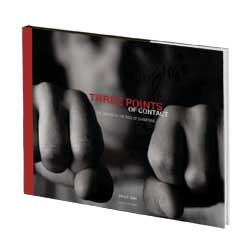
“Three Points of Contact is a dramatic series of portraits that reveal how the world’s greatest drivers use their eyes, hands, and feet to control their cars, outpace their rivals, and become champions.
Renowned director and photographer Jeff Zwart (author of the award-winning Porsche Rennsport) created these images at The Race of Champions, held in Paris and London, where top drivers from Formula One, the World Rally Championship, NASCAR, X-Games, and other series compete directly against each other driving identical cars.
Each driver is revealed in amazingly vivid detail, from seven-time Formula One World Champion Michael Schumacher to reigning NASCAR champion Jimmie Johnson. Zwart’s meticulously produced portraits focus on the eyes, hands, and feet—the three points of contact that every driver employs. The book’s large 13-inch by 11-inch format and high-quality printing bring out all of the nuances of Zwart’s close-up, specially de-saturated color photography.
Each copy is signed by the author and individually numbered.
”

It started as a daydream. Poring over a map of the world at home one quiet Saturday afternoon, Ewan McGregor — acclaimed actor and self-confessed bike nut — noticed that it was possible to ride all the way round the imageworld, with just one short hop across the Bering Strait from Russia to Alaska. It was a revelation he couldn’t get out of his head. So he picked up the phone and called his fellow actor-slash-biker friend Charley Boorman and told him it was time to hit the road….
Beginning in London, Ewan and Charley chased their shadows through Europe, the Ukraine, Kazakhstan, Mongolia, and Russia; across the Pacific to Alaska; then down through Canada all the way to New York. Long Way Round is the result of their four-month, 20,000-mile joyride. Featuring original diary entries, travel maps, mileage charts, and dozens of photographs, this is a freewheeling, fully charged, and uproariously entertaining book about two world-famous individuals who chose the road not taken…and made the journey worthwhile.

The Routemaster bus – instantly recognisable as the classic red double-decker London Transport bus – is a British icon, and a symbol unmistakably associated with London. Now the Routemaster receives the famous Haynes Manual treatment. This book provides a unique perspective on owning, restoring and operating a Routemaster, as well as an insight into the design, development and anatomy of this remarkably resilient machine, which saw continuous service in London for over 45 years.
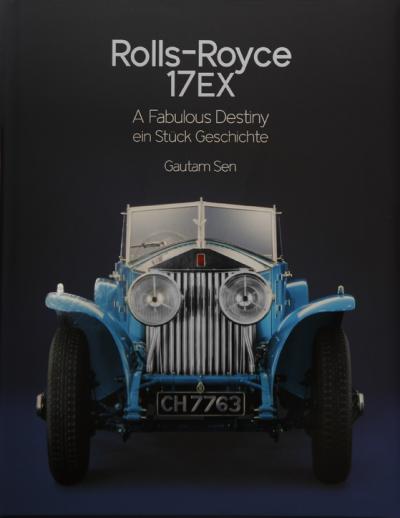
There are cars in the histories of all marques that are absolute milestones. In the case of Rolls-Royce, Silver Ghost AX201 and the experimental 1928 Phantom I torpedo 17EX were the first two of a string of chassis that all contributed to establishing the reputation of the marque.
In the late 1920s, luxury cars were competing for buyers both in the US and Europe. Winning races and rallies was a major factor in gaining customers.. Therefore, to keep up with the competition, Henry Royce felt it necessary to enhance the one model he had in production, the Phantom I, successor to the famed Silver Ghost. One hundred miles an hour was the goal, an almost mythical barrier for many cars! As a consequence, a lightweight streamlined style of body was tested on three experimental chassis (hence the EX tag in the chassis number). The design was created by Ivan Everndern and the cars received almost identical bodies, although by different coachbuilders, to facilitate ensure meaningful comparisons and tests.
This book is the story of one of these cars, 17EX, from conception to 2012. The book is lavishly illustrated with period photos in which we can see the car in India, where it was first sold to 33-year-old Rajah Hari Singh Bahadur after the tests. Its full history is known, which is quite rare. First in India from 1929 to 1976, then in various European countries, including Holland when it was owned by Spyker CEO Victor Muller until it passed to Austrian Alexander Schaufler in 2009. (17EX last traded hands in 2009 at an RM auction in London for €482,625.)
The car was fully restored to the last nut and bolt. Photos of the reframing and re-skinning attest to the thorough, no expense spared job which included a complete mechanical rebuild. This effort and passion earned the car a place in the Pebble Beach Concours d’Elegance in 2012.
This is a large format book full of top quality photographs
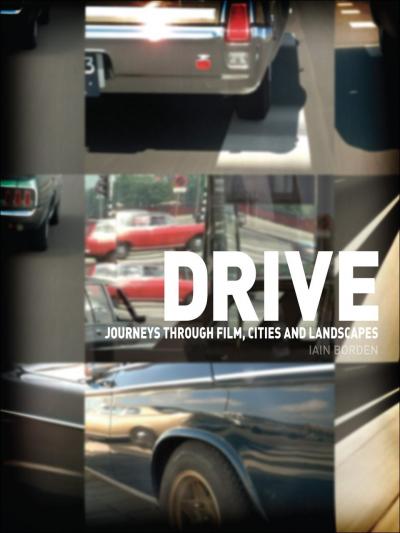
““The open road”—it’s a phrase that calls to mind a sense of freedom, adventure, and new possibilities that make driving one of our most liberating activities. In Drive, Iain Borden explores the way driving allows us to encounter landscapes and cities around the world. He takes particular notice of how driving is portrayed in film from America to Europe to Asia and from Hollywood to the avant-garde, covering over a century of history and referencing hundreds of movies.
From the dusty landscapes of The Grapes of Wrath to the city streets of The Italian Job; from the aesthetic delights of Rain Man and Traffic to the existential musings of Thelma and Louise and Vanishing Point;from the freeway pleasures of Radio On and London Orbital to the high-speed dangers of Crash, Bullitt, and C’était un Rendezvous; this book shows how driving with different speeds, cars, roads, and cities provides experiences and challenges beyond compare. Borden concludes that as an integral part of modern life, car driving is something to be celebrated and even encouraged, making Drive a timely riposte to anti-car attitudes, and those blind to the richness of life behind the wheel.
”
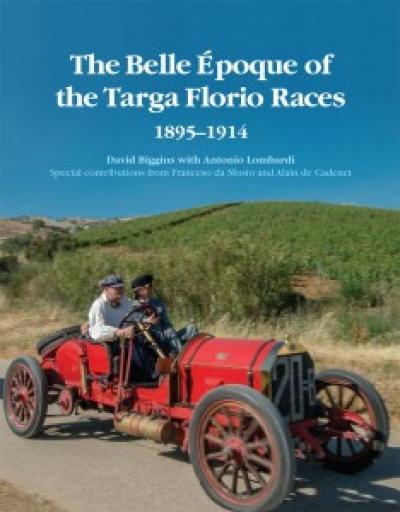
“The Belle Epoque (The Beautiful Age) coincides with the period of Edwardian extravagance so well depicted in the now famous TV series “Downton Abbey”. During this era, at the turn of the 20th century, Paris was the epicentre of fashion and art , London of society and class, Vienna of intellectual activity. New York’s own golden age was based on money, that classic American value!
There was an ebullient atmosphere everywhere , decadent and magnificent at the same time, coinciding with the momentous changes brought by modern inventions including wireless communication, the automobile, and the airplane. The privileged and moneyed classes enjoyed lives of extravagant luxury in sharp contrast to the desperate lives of the under classes, urban and rural. This contrast was even more evident in Sicily, where so many still endured medieval conditions. Palermo was one of Europe’s capitals of the period, visited regularly by royalty including the Czar of Russia and Germany’s Kaiser.
During those same years Vincenzo Florio, scion of Sicily’s leading family, created his eponymous race, the Targa Florio. He was only 23 when its first edition took place in 1906, but the honor committee included the presidents of the Automobile Clubs of the United Kingdom, France and Germany. Florio intended Sicily to be at the center of the blossoming new world of auto racing . He succeeded beyond his wildest dreams, and his story is being made into a movie titled ” Pistons, Passions & Sicilian Pleasures”. It will recount the early life of Vincenzo Florio and his friend and protege Felice Nazzaro, destined to become one of the greatest drivers of all time.
As a prelude to the release of the film, Upfolds Publishing announces the publication of the companion book..
The book narrates the experience of making this film. It is rich in illustration both historical and modern. The photographic artist Becca Parker captures both the beautiful landscapes of Sicily and the excitement of one hundred year old racing cars, reliving the passions of the Targa Florio, the oldest race in the world.
The book is a hard covered coffee table style in high definition.
“
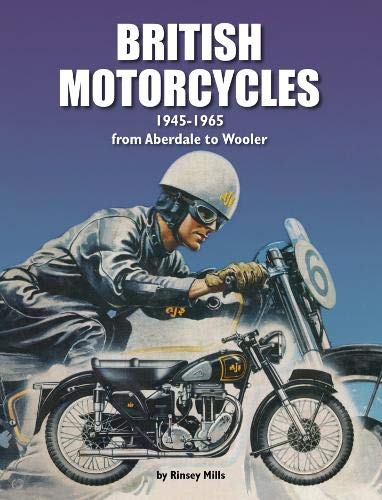
From Aberdale to Wooler
From the forgotten Aberdale, of Llwynypia, Wales, to the ingeniously eccentric Wooler, of north-west London, British Motorcycles 1945-1965 offers alphabetical coverage – in no less than 600 pages – of British motorcycle makes of the period 1945-1965, among them great names such as AJS, BSA, Matchless, Norton, Royal Enfield, Triumph and Vincent.
The two decades covered by this book represent the final flowering of the motorcycle industry in Britain, a period when British bikes were shipped all over the world, when America discovered high-performance British twins and when ton-up boys vied with each other in feats of horrific daring. In the meantime, rush-hour roads resounded to the buzz and crackle of ride-to-work two-strokes, men hidden in cumbersome waterproof coats slogged along on unwieldy sidecar outfits, wife on the pillion, kids alongside, and courting couples, carefree, hugging tight, enjoyed a sunlit ride to the seaside or into the hills.
In this intensely detailed study, author Rinsey Mills gives the histories of the motorcycle manufacturers and then provides information on the models they produced, year by year, using original material from sales brochures for the illustrations, not only to identify the bikes and to highlight model changes and revisions, but also to give the flavour of the times when they were to be seen going about their business.
Whether your taste is for the obscure and the might-have-beens, for workaday two-strokes, nimble scramblers, thumping singles, ton-up twins or fiery road racers, all are here, offering an unrivaled store of knowledge and information as well as more than 1,500 illustrations that provide a powerful evocation of motorcycling in these two decades. The illustrations are accompanied by generous and informative captions which help to convey the strengths, weaknesses and character of the machines, as well as provide intriguing technical insights.
Autobooks-Aerobooks 2900 W. Magnolia Blvd. Burbank, CA 91505 (818) 845-0707 Hours: Tuesday-Friday 10:00 AM – 6:00 PM Saturday 10:00 AM – 6:00 PM Closed Sunday and Monday Accept Credit Cards gift cardYES, We have Gift Cards - Click Here AUTOBOOKS IS OPEN...




